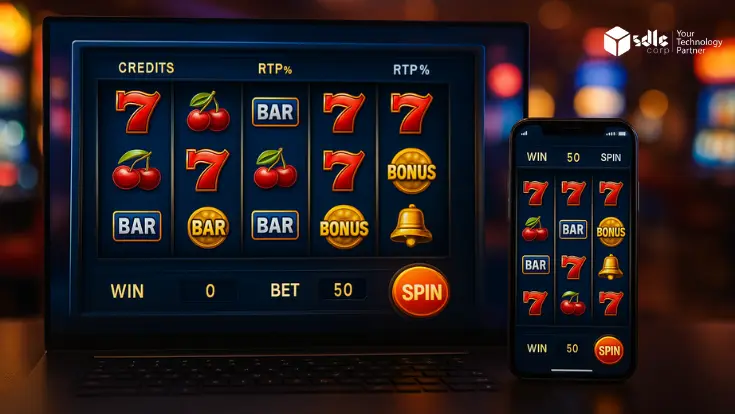In recent years, the gaming industry has been undergoing a massive transformation, thanks to the advent of blockchain technology and decentralized finance (DeFi). One of the key areas where this convergence is taking place is in GameFi—a fusion of gaming and decentralized finance. Central to this evolution is the concept of tokenomics, which governs the economic systems within these blockchain-based games. Tokenomics refers to the use of tokens—cryptographic assets that serve as currency, governance tools, or rewards in a digital ecosystem. In GameFi, understanding tokenomics is essential for developers and players alike, as it can significantly impact the success and sustainability of in-game economies.
In this blog, we will dive deep into the world of tokenomics in GameFi, exploring how tokens drive the in-game economy, their role in creating sustainable ecosystems, and how they benefit both developers and players.
Experience the Next Era of Gaming: Play, Earn, and Thrive with GameFi
Our expert team is here to guide you every step of the way.

The Role of Tokenomics in GameFi
Tokenomics in GameFi is the backbone of any in-game economy. It defines the creation, distribution, and management of tokens within the game. These tokens can take several forms, such as utility tokens, governance tokens, and NFTs (non-fungible tokens), each serving a specific purpose. By understanding the role of tokenomics, game developers and players can better navigate the complex dynamics of blockchain gaming.
Utility Tokens
Utility tokens in GameFi are typically used for in-game purchases, such as buying items, equipment, or upgrading characters. They serve as the medium of exchange, much like traditional in-game currencies but with one key difference—they exist on the blockchain and can often be traded or exchanged for real-world value.
For instance, in games like Axie Infinity, players use SLP (Smooth Love Potion) tokens to breed Axies, the in-game characters. SLP tokens are traded on decentralized exchanges, allowing players to convert their in-game assets into real-world earnings. This creates a play-to-earn (P2E) model, where players are not just spending money but can potentially profit from their gaming activities.
Governance Tokens
Governance tokens provide players with a stake in the game’s development and future. These tokens grant voting rights on key issues such as game updates, changes to tokenomics, and community governance. By giving players a voice in decision-making, governance tokens create a decentralized and community-driven gaming ecosystem.
In many GameFi platforms, governance tokens are also a form of investment. Players who hold these tokens may benefit from the game’s success, as their value can increase with the game’s popularity. This incentivizes players not only to engage with the game but also to participate in its governance, further aligning the interests of developers and users.
NFTs in GameFi
Non-fungible tokens (NFTs) represent unique in-game assets such as characters, weapons, skins, or even virtual land. Unlike utility and governance tokens, which are fungible and interchangeable, NFTs are one-of-a-kind, providing proof of ownership and rarity. In the GameFi ecosystem, NFTs enable players to truly own their in-game assets, allowing them to trade, sell, or rent them to other players.
NFTs introduce a new layer of complexity and value to tokenomics, as they can appreciate in value based on their rarity, demand, and utility within the game. This can create speculative markets where players invest in NFTs, hoping to sell them at a higher price later. However, this also introduces the need for sound tokenomics, as an oversupply of NFTs or poorly balanced token distribution can lead to inflation and economic instability within the game.
Token Distribution and Supply
key aspect of tokenomics in GameFi is the distribution and supply of tokens. Developers must carefully plan how many tokens will be issued, how they will be distributed, and over what period. This is crucial to maintaining a balanced in-game economy and preventing issues like inflation or deflation, which can disrupt the gaming experience.
Initial Token Offering (ITO)
In many blockchain games, tokens are first distributed through an Initial Token Offering (ITO), where early investors or players can purchase tokens at a fixed price. This helps raise funds for the game’s development while distributing tokens to a wide audience. However, developers must ensure that token allocation is fair, as concentrating too many tokens in the hands of a few investors can lead to centralization and market manipulation.
Vesting Periods
To prevent token dumping and market volatility, many GameFi projects implement vesting periods for their tokens. A vesting period is a set time during which token holders cannot sell or transfer their tokens. This encourages long-term participation and reduces the risk of short-term speculation, which can harm the in-game economy.
Token Burn
Token burning is another mechanism used in GameFi to control inflation. By permanently removing tokens from circulation, developers can reduce the total supply, increasing the value of the remaining tokens. This can be especially important in play-to-earn games, where players are constantly earning tokens through gameplay. Without a burn mechanism, the supply of tokens could quickly outpace demand, leading to inflation and devaluing players’ earnings.
Sustainability of In-Game Economies
One of the biggest challenges in GameFi is creating a sustainable in-game economy. Poorly designed tokenomics can lead to hyperinflation, market crashes, or an unsustainable play-to-earn model where only early adopters benefit. To ensure long-term sustainability, developers must focus on several key factors:
Balancing Token Supply and Demand
A healthy in-game economy relies on a balanced supply and demand for tokens. Developers must ensure that there are enough use cases for tokens to drive demand while controlling the supply through mechanisms like token burning or limiting the issuance of new tokens. If the supply of tokens exceeds demand, players may lose interest in the game, and the token’s value could plummet.
Continuous Development and Updates
GameFi projects must also prioritize continuous development and updates to keep players engaged. In traditional games, developers release new content, expansions, and updates to retain player interest. In GameFi, this is even more critical, as players are not just playing for entertainment but also for financial gain. New content creates new opportunities for earning and spending tokens, driving demand and maintaining a healthy in-game economy.
Incentivizing Long-Term Participation
To create a sustainable GameFi ecosystem, developers must incentivize long-term participation. This can be done through staking, where players lock up their tokens in exchange for rewards or interest, or through governance, where long-term players have a say in the game’s future. By rewarding players for their loyalty, developers can reduce the risk of market manipulation and speculation, which can destabilize the economy.
Benefits for Developers and Players
The tokenomics of GameFi provides unique benefits for both developers and players, creating a symbiotic relationship that drives the success of blockchain games.
For Developers
For developers, tokenomics offers new monetization opportunities beyond traditional in-game purchases or subscription models. By creating a robust token economy, developers can generate revenue through token sales, NFT auctions, and transaction fees. Additionally, governance tokens allow developers to offload some of the decision-making to the community, fostering a more engaged and loyal player base.
For Players
Players, on the other hand, benefit from true ownership of their in-game assets and the ability to earn real-world value through gameplay. In traditional games, players spend money on in-game items that have no value outside the game. In GameFi, these assets can be traded, sold, or even rented out, allowing players to profit from their investment of time and money.
Moreover, governance tokens give players a voice in the game’s development, allowing them to shape the future of the game and ensure that their interests are represented.
Conclusion
Tokenomics is the backbone of Game-Fi, shaping how players earn, spend, and trade assets in virtual economies. A well-designed in-game economy ensures sustainability, balancing supply and demand while maintaining player engagement and long-term value. From utility and governance tokens to staking mechanisms and reward structures, every element of tokenomics plays a crucial role in defining the success of a Game-Fi project.
However, challenges like inflation, price volatility, and regulatory uncertainties demand strategic planning and constant optimization. Game developers must integrate robust economic models, sustainable token sinks, and fair reward systems to prevent market crashes and speculative bubbles.
As blockchain gaming continues to evolve, innovative tokenomics models will shape the future of digital assets in gaming, driving mainstream adoption and financial opportunities for players and investors alike. Whether you’re a developer, investor, or gamer, understanding in-game tokenomics is essential for navigating the future of Game-Fi.



